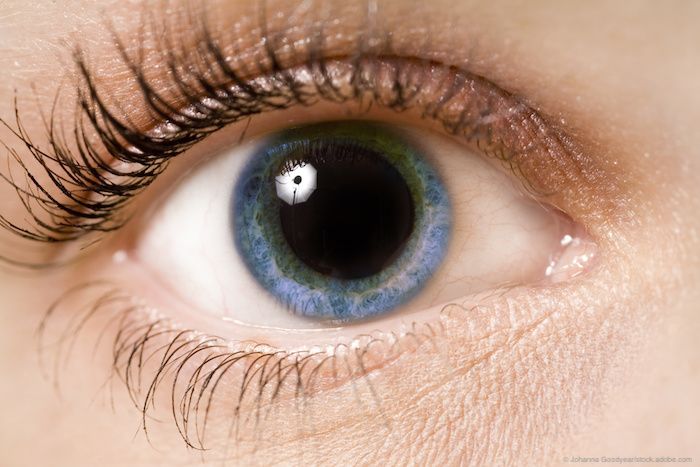Refillable implant releasing ranibizumab in phase III study

As Archway-a phase III study evaluating the efficacy and safety of ranibizumab 100 mg/mL delivered via the Port Delivery System (PDS) for the treatment of neovascular age-related macular degeneration (nAMD)-is getting under way, investigators are being trained in the procedures for implanting and refilling the PDS.
Dante J. Pieramici, MD, described the study protocol and how it was shaped by findings from the phase II LADDER trial.
“The training is time- and labor-intensive. It is important, however, for optimizing safety outcomes in this trial that will hopefully lead to approval of a therapeutic option that can reduce the treatment burden for many of our patients with nAMD,” said Dr. Pieramici, director, California Retina Research Foundation, and partner, California Retina Consultants, Santa Barbara, CA.
Archway is a multicenter registration trial with a planned enrollment of 360 patients. It is comparing treatment with the PDS implant refilled on a 6 month basis with a special formulation of ranibizumab versus monthly intravitreal injection of ranibizumab 0.5 mg (Lucentis, Genentech).
The population being recruited for the study is represented by patients who have responded to anti-VEGF therapy and are expected to need ongoing frequent injections.
To be eligible for participation in Archway, patients must be at least 50 years of age and have a BCVA of 34 ETDRS letters or better. Other inclusion criteria require a diagnosis of nAMD within the previous 9 months, demonstrating of response to prior intravitreal anti-VEGF treatment, and receiving at least 3 injections in the 6 months prior to screening.
In Archway, the PDS implant will be mandatorily refilled every 24 weeks while the intravitreal ranibizumab arm will receive treatment on a monthly basis. The dose of the implant and the refill schedule were chosen based on results of LADDER that compared PDS filled with three different dosages-10, 40, and 100 mg/mL-against monthly intravitreal ranibizumab 0.5 mg.
The primary objective of LADDER was to determine the time until a patient first required implant refill, and the data analysis showed a clear dose-response relationship. Median time to refill was 15 months in the 100 mg/mL group, 13 months for the 40 mg/mL group, and 9 months for patients who received PDS 10 mg/mL.
“Looking at the refill data another way, 80% of patients who were in the PDS 100 mg/mL group went 6 months or longer without getting an implant refill. Therefore, when designing Archway, we were comfortable choosing 6 months as the standardized refill interval,” Dr. Pieramici said.
“The Archway protocol, however, also includes anatomical and visual acuity criteria for allowing patients in the PDS group to receive a supplemental intravitreal injection of ranibizumab at 8 or 4 weeks prior to mandatory refill.”
He added that Archway has a non-inferiority/equivalence design.
“Although data from LADDER showed that some patients can go longer than 6 months without needing their device refilled, the 6-month interval seemed to be a reasonable approach for establishing non-inferior visual results and anatomic results compared to monthly ranibiziumab. Should the product become available, we can begin to experiment with extending the treatment interval longer.”
The primary endpoint in Archway is looking at change in ETDRS BCVA from baseline to the average of weeks 36 and 40. The protocol includes numerous secondary functional and anatomical endpoints and comprehensive safety evaluations.
Dr. Pieramici explained that the clinical viability of PDS depends on establishing a good safety profile.
“If the complication rates are too high, the PDS would not be a favorable treatment strategy compared with intravitreal ranibizumab,” he said.
The implant is placed in the superotemporal quadrant of the pars plana about 4 mm posterior to the limbus in a one-time outpatient surgical procedure. Refilling of the implant is performed in the office using a customized needle inserted through the conjunctiva and through the diaphragm of the device.
“Compared with intravitreal injections, the refill procedure is more comfortable for patients but more technically difficult for surgeons,” Dr. Pieramici said.
He also mentioned that although the PDS is currently only being studied as a reservoir for continuous sustained delivery of ranibizumab for treatment of nAMD, it represents an exciting platform for future pharmacologic dosing.
“By changing the implant’s filter parameters, it can likely be used to release other medications and for the management of other diseases,” he said.
Disclosures:
Dr. Pieramici is a consultant for Genentech and an investigator in the ranibizumab PDS trials.
Newsletter
Keep your retina practice on the forefront—subscribe for expert analysis and emerging trends in retinal disease management.